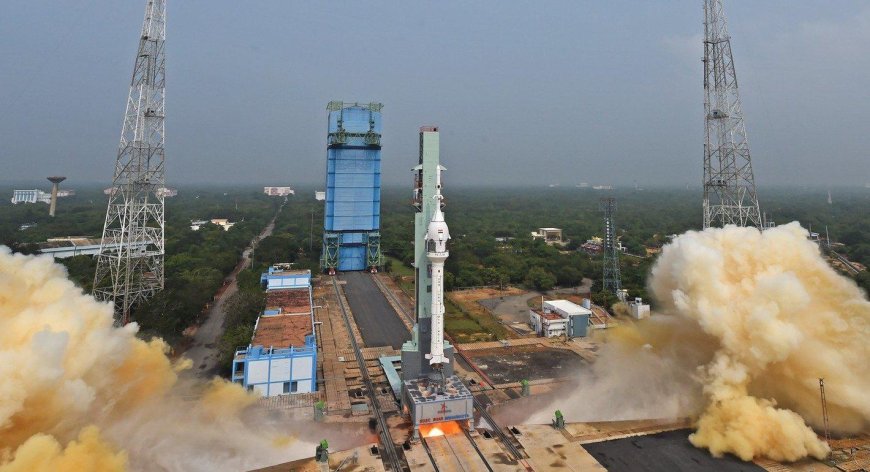Beyond the Moon and Sun: What’s Next for India’s Space Ambitions After Chandrayaan-3 and Aditya-L1
After Chandrayaan-3 and Aditya-L1, India is setting its sights on Gaganyaan, Venus, Mars missions, and global space leadership. Explore what's next for ISRO.

India’s recent successes in space exploration have captured global attention. With Chandrayaan-3’s historic soft landing on the Moon’s south pole and Aditya-L1 embarking on a solar mission to study the Sun’s corona, India has established itself as a serious contender in the new era of space competition. But these missions are only the beginning. What lies ahead for the Indian Space Research Organisation (ISRO), and how is India shaping its long-term strategy in space science, technology, and exploration?
This article delves deep into India’s next moves, emerging technologies, strategic collaborations, and the broader implications of its space race on national development and global geopolitics.
A Brief Recap: Chandrayaan-3 and Aditya-L1
The Chandrayaan-3 mission, launched on July 14, 2023, made headlines by successfully landing near the Moon’s south pole on August 23, 2023. This marked India as the first country to reach the lunar south pole and the fourth to achieve a soft lunar landing overall, after the US, USSR, and China. The Vikram lander and Pragyan rover conducted crucial data collection on lunar soil composition and seismic activity.
Shortly after, Aditya-L1 was launched on September 2, 2023. As India's first solar observatory mission, it was designed to study solar flares, coronal mass ejections, and space weather. The mission reached its destination at the Lagrangian Point 1 (L1), roughly 1.5 million kilometers from Earth, and continues to send real-time data back to ISRO.
These missions have elevated India’s credibility in the global space community and laid the groundwork for future interplanetary explorations.
Learn more about Aditya-L1 on the ISRO official mission page.
What’s Next for India’s Space Program?
1. Gaganyaan: India’s First Human Spaceflight Mission
India’s long-anticipated Gaganyaan mission is scheduled for late 2025 or early 2026. It will be the first crewed orbital mission by ISRO, aiming to send three astronauts to low Earth orbit (LEO) for up to three days. The mission's significance lies not just in technological advancement, but also in its symbolic value—projecting India as a leader in self-reliant space exploration.
ISRO is working with HAL, DRDO, and private players to develop critical technologies, including crew modules, life support systems, and re-entry mechanisms.
2. Shukrayaan-1: Exploring Venus
India is also planning Shukrayaan-1, a mission to explore Venus, tentatively scheduled for 2028. The goal is to study the Venusian atmosphere, surface chemistry, and active volcanism. The mission is expected to position India among the few countries investigating Earth’s "sister planet."
3. Mars Orbiter Mission-2 (Mangalyaan-2)
Following the success of Mangalyaan (Mars Orbiter Mission) in 2014, ISRO is preparing Mangalyaan-2, which may include a lander and a rover. The mission aims to deepen India’s study of Mars, particularly its surface and atmosphere. Although a launch date has not been finalized, the project is in the planning stage.
India’s Expanding Role in Global Space Ecosystems
Commercial Launch Services
India’s affordability and precision have made it a preferred destination for small satellite launches. In June 2024, ISRO’s commercial arm, NSIL (NewSpace India Ltd), signed contracts with multiple international agencies for launch services using the PSLV and SSLV platforms.
See the latest updates from NSIL’s official website
Private Sector Participation
The Indian government’s space sector reforms have led to the emergence of startups like Skyroot Aerospace, Agnikul Cosmos, and Pixxel, working on launch vehicles, small satellites, and Earth observation services.
Read Forbes' article: India’s Booming Private Space Sector
International Collaborations
India continues to build strategic collaborations with major space agencies including NASA, JAXA (Japan), and ESA (Europe). Notably, NASA and ISRO are developing the NISAR satellite (NASA-ISRO Synthetic Aperture Radar), expected to launch in 2025 to monitor Earth’s ecosystems and climate change impact.
Strategic Objectives Driving India’s Space Future
-
Technological Sovereignty: By mastering cryogenic engines, reusability, and deep space navigation, India seeks to reduce dependence on foreign tech.
-
Geopolitical Influence: Space success strengthens India's influence in international forums and strategic partnerships like BRICS and QUAD.
-
Economic Multiplier Effect: The Indian space economy is projected to grow from $8 billion in 2023 to $40 billion by 2040, according to EY and ISpA.
Environmental and Scientific Payoffs
India’s space exploration has tangible benefits for weather forecasting, agricultural planning, disaster management, and climate science. Satellites like INSAT, RISAT, and CartoSat provide data crucial for national development and environmental monitoring.
Explore ISRO’s contributions to Earth observation on ISRO Earth Science Portal
Challenges to Overcome
Despite significant progress, ISRO faces:
-
Budget constraints
-
Delays in complex missions
-
Shortage of skilled workforce
-
Space debris management
Strategic investments in R&D, global partnerships, and regulatory frameworks will be critical for sustaining momentum.
Conclusion
India’s journey from launching sounding rockets in the 1960s to executing complex lunar and solar missions has been nothing short of extraordinary. With a clear vision and expanding ecosystem, India is poised to be a dominant force in the global space race—not just as a participant, but as a pioneer.
As the nation prepares for human spaceflight, interplanetary exploration, and a thriving space economy, the question is no longer if India can lead in space—it’s when and how far it will go.









